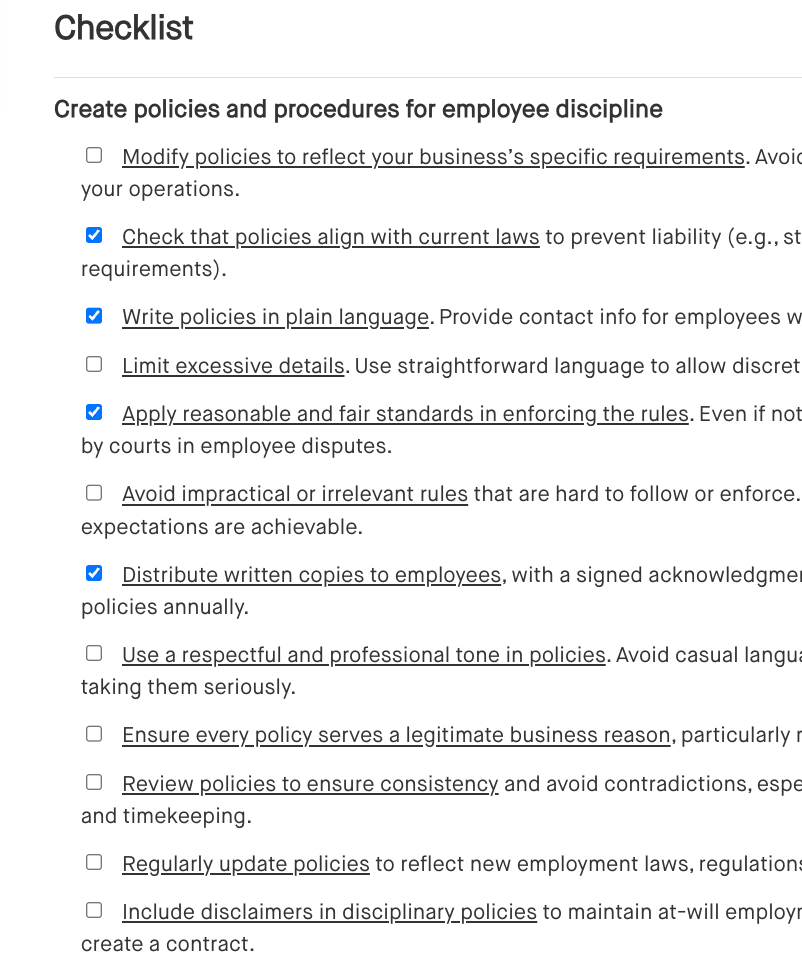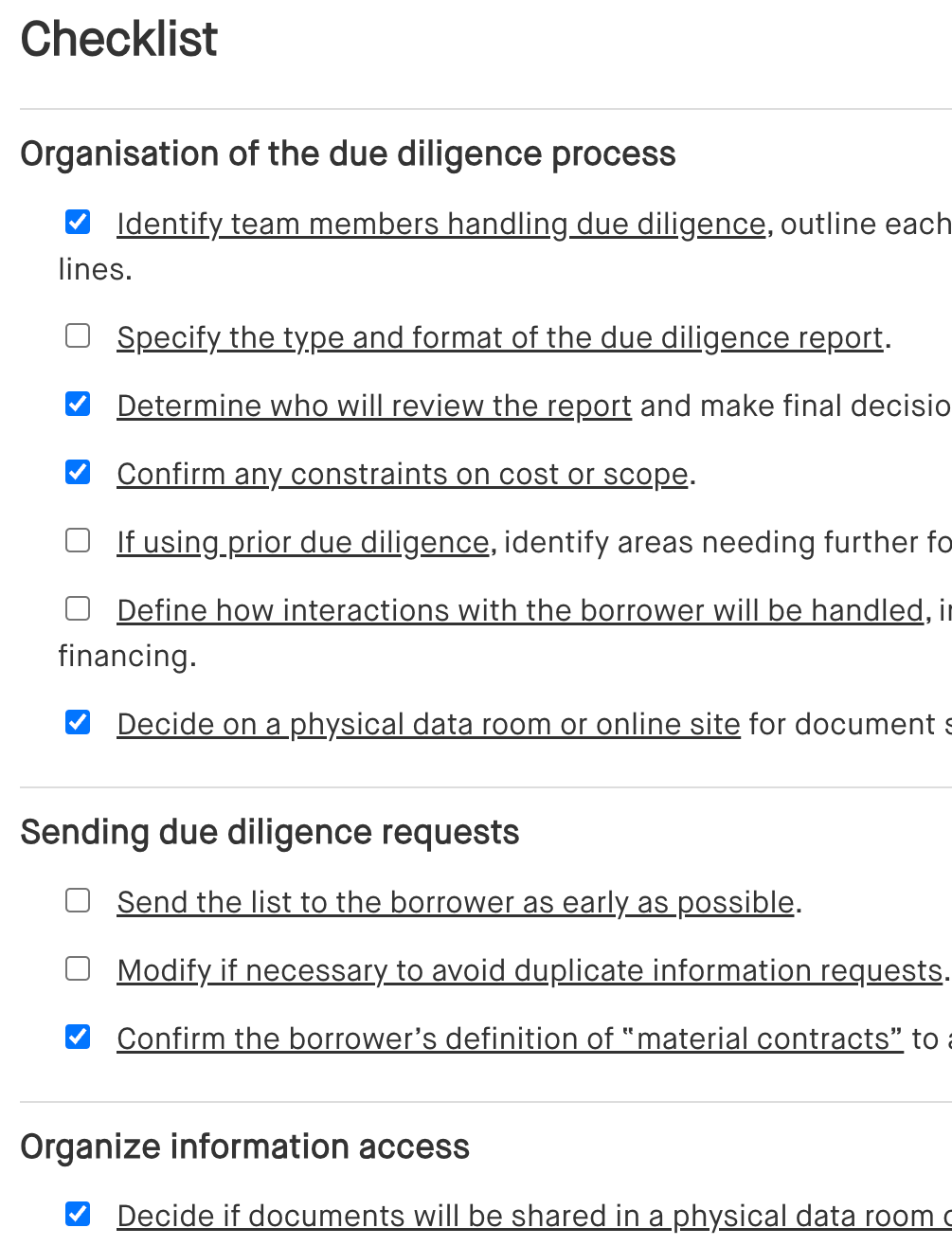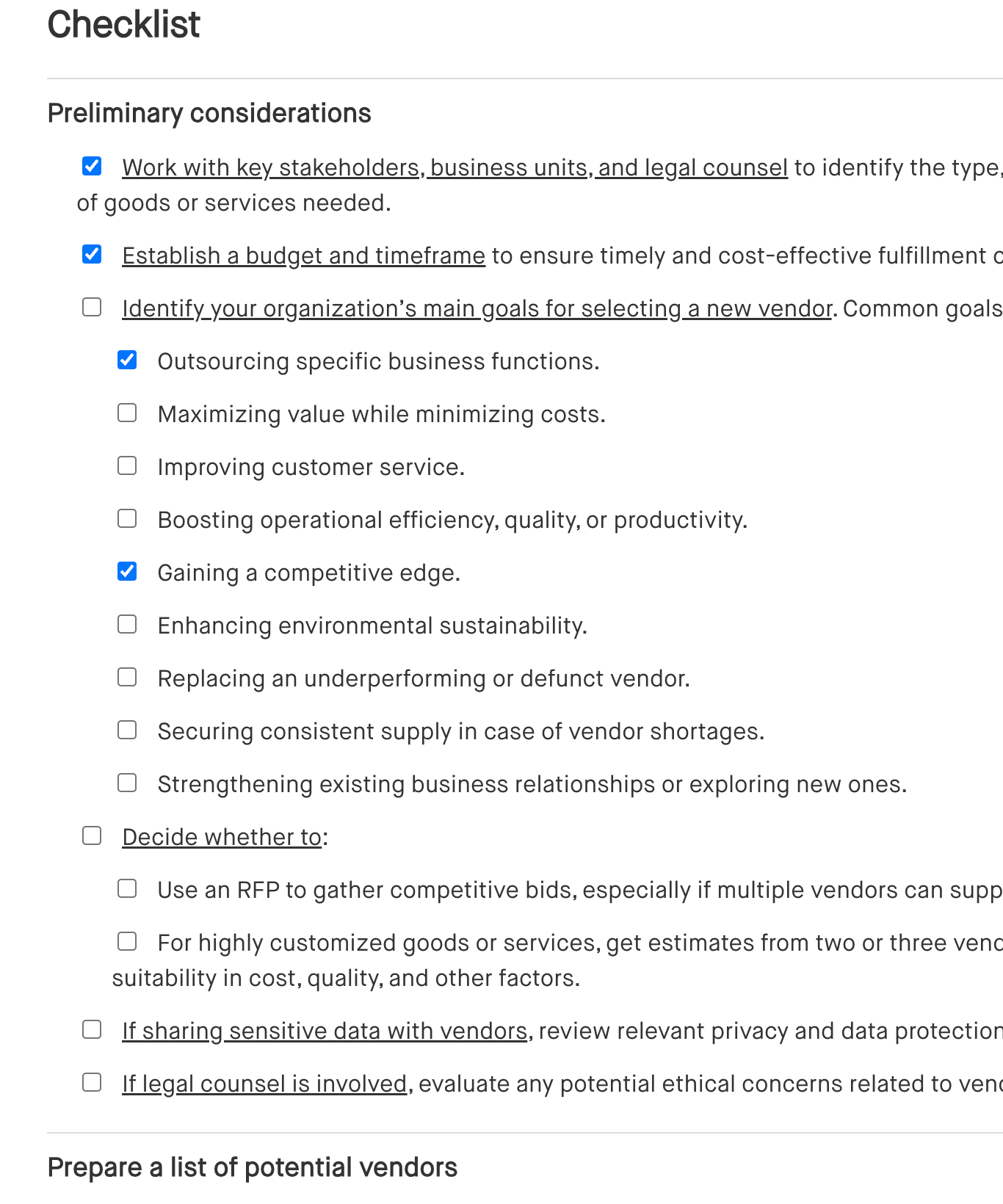Using generative AI in the workplace checklist: Free template
Using generative AI workplace checklist
This checklist helps your company manage the responsible use of generative AI tools, addressing key risks like data privacy, intellectual property, and cybersecurity. By following each step, you'll ensure compliance with regulations, protect sensitive information, and avoid issues like biased or inaccurate outputs. This structured approach keeps your organization secure and ready for future changes in AI technology.
How to use this using generative AI workplace checklist
Here’s how to get the most out of this generative AI workplace checklist:
- Follow the process: This checklist guides you through the key areas of concern when using generative AI tools in your workplace, from data security to managing legal risks. Use it to ensure that every important aspect is addressed.
- Tailor to your business: Adjust the checklist to match your organization’s policies and specific uses of generative AI tools. This will ensure it aligns with your business’s goals, legal obligations, and operational needs.
- Engage relevant departments: Collaborate with IT, legal, HR, and other key departments to review the checklist and ensure everyone is on the same page regarding generative AI use. Their involvement is crucial to managing compliance and mitigating risks effectively.
- Track and document progress: As you work through the checklist, keep track of completed tasks and actions taken. This helps ensure accountability and creates a clear record of how generative AI tools are managed in your organization.
- Review regularly: Given the fast-paced changes in AI technology and regulations, make sure to review and update this checklist periodically to stay compliant with evolving legal requirements and industry standards.
Checklist
Benefits of using a generative AI workplace checklist
A generative AI workplace checklist helps you use AI tools effectively while minimizing risks. Here’s how it helps:
- Ensure compliance: It helps you stay aligned with legal, regulatory, and ethical standards when using generative AI, ensuring your company complies with relevant laws and avoids penalties.
- Reduce risks: By following the checklist, you can reduce the likelihood of data breaches, intellectual property issues, or biased AI outputs, protecting your business from costly errors.
- Protect confidential information: It guides employees on how to handle sensitive data carefully when using AI tools, helping prevent exposure of trade secrets or customer data.
- Streamline processes: The checklist provides a clear, organized approach for managing AI use in the workplace, ensuring consistency and reducing confusion across your team.
- Foster responsible AI use: It promotes ethical and secure use of generative AI, ensuring your organization leverages AI's capabilities while maintaining integrity and safeguarding business operations.
Frequently asked questions (FAQs)
Q: Why do I need a generative AI workplace checklist?
A: A checklist helps your company use generative AI tools safely and effectively. It guides you through the necessary steps to prevent issues like data breaches, IP infringements, and regulatory violations. By having clear guidelines, you reduce the risks that come with adopting new technology in the workplace.
Q: What should I do if generative AI tools produce inaccurate or biased information?
A: It's important to have a review process in place for all AI outputs. Ensure that employees check AI-generated content before using it in any business decisions. This helps catch and correct any inaccurate, biased, or misleading information, preventing potential harm to the business.
Q: Can generative AI tools be used for all tasks?
A: Not necessarily. While AI can assist with many tasks, it’s important to assess each tool’s suitability for specific jobs. Sensitive tasks, such as handling confidential data or making critical decisions, may not be appropriate for AI without human oversight.
Q: How often should we review our AI policies?
A: Given how quickly AI technology and regulations evolve, it’s crucial to review and update your policies at least once a year. Regular updates ensure that your company remains compliant and that your policies stay relevant to any changes in the legal or technological landscape.
Q: Is it necessary to train employees on using generative AI tools?
A: Yes, training is essential. Employees need to understand the limitations and risks associated with using AI tools. Proper training ensures they can use these tools effectively and responsibly, following best practices and mitigating risks like data misuse or biased outputs.
This article contains general legal information and does not contain legal advice. Cobrief is not a law firm or a substitute for an attorney or law firm. The law is complex and changes often. For legal advice, please ask a lawyer.


